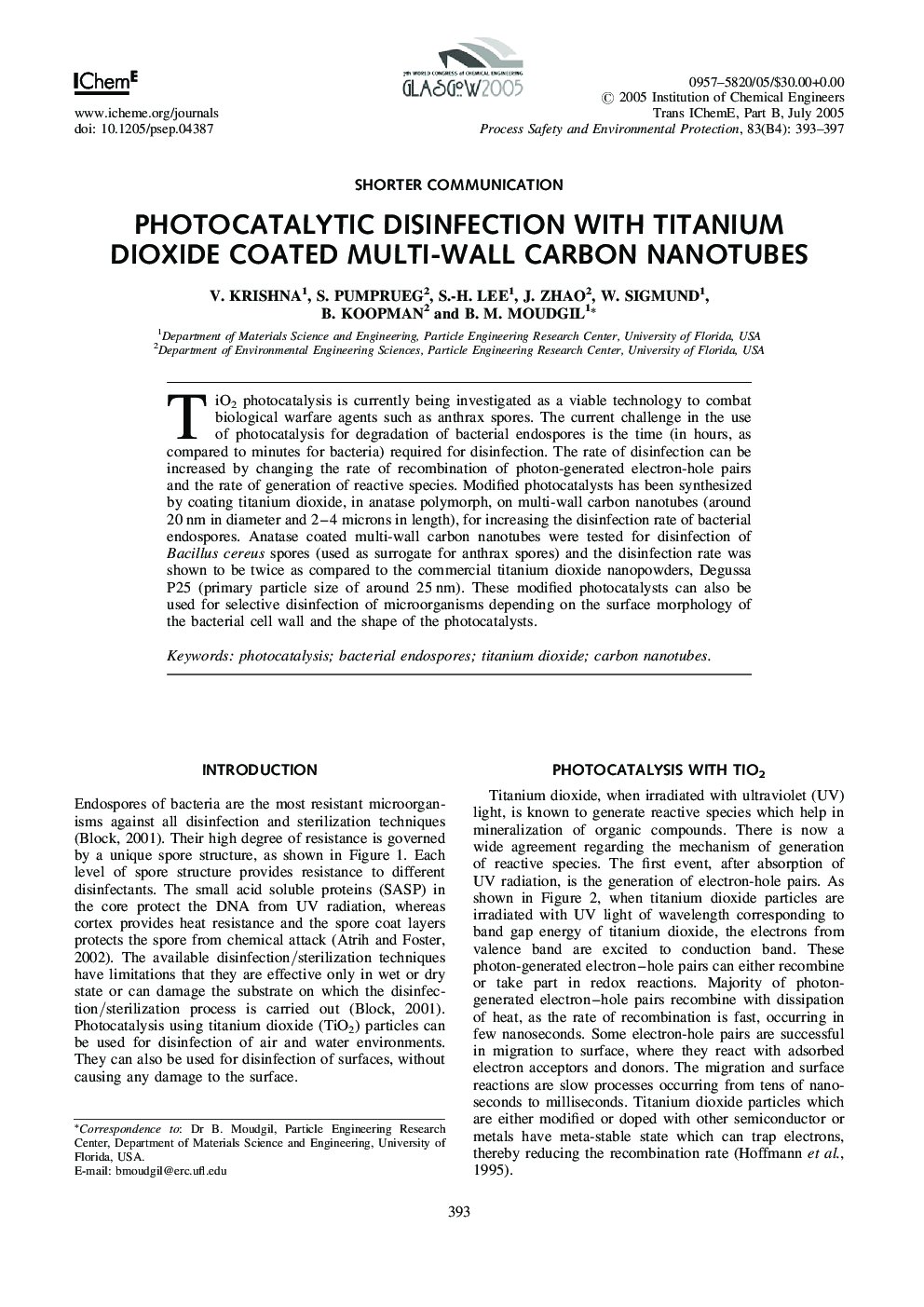| Article ID | Journal | Published Year | Pages | File Type |
|---|---|---|---|---|
| 10374140 | Process Safety and Environmental Protection | 2005 | 5 Pages |
Abstract
TiO2 photocatalysis is currently being investigated as a viable technology to combat biological warfare agents such as anthrax spores. The current challenge in the use of photocatalysis for degradation of bacterial endospores is the time (in hours, as compared to minutes for bacteria) required for disinfection. The rate of disinfection can be increased by changing the rate of recombination of photon-generated electron-hole pairs and the rate of generation of reactive species. Modified photocatalysts has been synthesized by coating titanium dioxide, in anatase polymorph, on multi-wall carbon nanotubes (around 20 nm in diameter and 2-4 microns in length), for increasing the disinfection rate of bacterial endospores. Anatase coated multi-wall carbon nanotubes were tested for disinfection of Bacillus cereus spores (used as surrogate for anthrax spores) and the disinfection rate was shown to be twice as compared to the commercial titanium dioxide nanopowders, Degussa P25 (primary particle size of around 25Â nm). These modified photocatalysts can also be used for selective disinfection of microorganisms depending on the surface morphology of the bacterial cell wall and the shape of the photocatalysts.
Related Topics
Physical Sciences and Engineering
Chemical Engineering
Chemical Health and Safety
Authors
V. Krishna, S. Pumprueg, S.-H. Lee, J. Zhao, W. Sigmund, B. Koopman, B.M. Moudgil,
